Energy cooperatives, in particular solar, are widely distributed in many countries of Europe. These associations, according to experts ‘ calculations, make a fairly capacious contribution to the economies of their countries. Ukraine at this stage is only adopting the experience of countries that have outlined a course on renewable energy as a priority. Our country does not have a strong legislative background regulating the functioning and full development of cooperatives. Let us consider the example of some of the most prominent countries in the field of energy operations; what steps taken by our state to reach a fundamentally new level of energy generation from alternative sources.
Germany
Energy cooperatives are not limited to a model of electricity generation with the sun or wind. In Germany now these associations work in diametrically different directions, including provide the population with heat and other benefits. In addition, all within the framework of alternative energy.
Participants of German energy cooperatives have long understood that earning only on the “green” tariff means to limit their sphere of activity. That is why there are many models in which cooperatives why work in different directions.
Cooperatives Germany, there are different scales. Associations that include residents of only one district of the city or even the streets are actively working. The largest power plant, which operates on biological gas, and is in the possession of the cooperative, is located in the city of Feldheim. Its capacity is 526 kilowatts.
In addition to Germany, energy operations are widely spread in the Netherlands, Denmark, Australia, Great Britain and Sweden. It is necessary to emphasize energy cooperatives United States of America. In the United States, there is a special Association of energy operators, the number of members of which reaches 750. There are cooperatives in 46 States. These associations form a powerful energy unit, through which millions of US residents and co-owners of cooperatives receive the necessary amount of electricity.
In Ukraine, the only option to get electricity is to connect to the regional Power. For many Europeans it is already outdated, because historically energy cooperatives originate from the 30-40-ties of the XX century.
Denmark
In the 1970s, Denmark was very dependent on fossil fuels imported from other countries. The fuel sector of the country was distribute in such a way that about 90 percent of oil fell. At that time, the impetus for finding alternative solutions was the oil crisis. The government’s attention drawn to wind power, because Denmark has favorable climatic conditions for its full development.
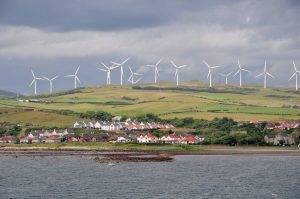 Already in 2013, wind turbines could provide almost 4 thousand megawatts of energy to the total energy network. To clarify the picture, it should be note that Denmark’s energy consumption is only 800 megawatts more than this amount.
Already in 2013, wind turbines could provide almost 4 thousand megawatts of energy to the total energy network. To clarify the picture, it should be note that Denmark’s energy consumption is only 800 megawatts more than this amount.
Energy cooperatives have played a primary role in that country. Experts assure that 85 percent of wind turbines were install with the assistance of cooperative members. In total, more than one hundred thousand families are involved in the generation of “green” energy in Denmark.
In addition to wind generation, Danish residents united in cooperatives to heat their homes. In General, Denmark is a vivid example of the active use of renewable energy sources and respect for the environment.
Cooperatives have different models of interaction between co-owners. Consider the most popular.
Association of owners of private SES
Here we are talking about the fact that people enter into a cooperative to reduce the cost of buying and installing equipment. The cost of home SES 20 percent less if you buy panels and associated equipment consisting of the co-operative wholesale.
SonnenCommunity-innovative energy market
This platform was develop in Germany. A special feature is that inside the service, participants can buy from each other accumulated in excess of electricity, and much cheaper than from other suppliers.
A new format of interaction – Sunny garden
This model of cooperatives is quite popular in the United States. The specifics of this project is that even a family with limited means can become a co-owner of Solar Gardens. Installation of a solar power plant within the household requires considerable investments and many forces. For the average family will need to install a couple dozen panels to ensure energy consumption at home.
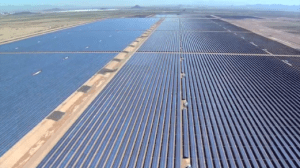 In addition, the estimate should include many items of related equipment and installation costs. Solar gardens allow you to invest your money in several panels in a common project and profit from them on a personal account. Some people consider this option as a kind of Deposit or alternative to pension, because payments will made for 25 years.
In addition, the estimate should include many items of related equipment and installation costs. Solar gardens allow you to invest your money in several panels in a common project and profit from them on a personal account. Some people consider this option as a kind of Deposit or alternative to pension, because payments will made for 25 years.
In Colorado, a law was pass in 2011 regulating the work of cooperatives of this kind and thereby protecting depositors.
Solar energy of Ukraine attracts investors from a number of countries. While cooperatives in our country are just beginning to exist, although the benefits of such investment are obvious and confirmed by existing projects. If the government at the legislative level takes all necessary measures to regulate the work of energy cooperatives, we will have a chance to make a jump in the direction of energy independence.
 The invention of the students of the gymnasium is that if the ventilation system is installed over the mine, it will be possible to collect condensed moisture in a special reservoir. The fans of the system will create a vortex air movement and stretch it through the shaft. Thus, inside the tunnel of the mine there will be conditions for the formation of the dew point, including the temperature at which moisture condensation occurs.
The invention of the students of the gymnasium is that if the ventilation system is installed over the mine, it will be possible to collect condensed moisture in a special reservoir. The fans of the system will create a vortex air movement and stretch it through the shaft. Thus, inside the tunnel of the mine there will be conditions for the formation of the dew point, including the temperature at which moisture condensation occurs. Participants of the “ZoloWizards” team have already received prize winning places in various contests and tournaments, even became the winners of the “Inspirational Team Spirit” reward. Schoolchildren noticed that they received essential help from the gymnasium and their trainer.
Participants of the “ZoloWizards” team have already received prize winning places in various contests and tournaments, even became the winners of the “Inspirational Team Spirit” reward. Schoolchildren noticed that they received essential help from the gymnasium and their trainer.











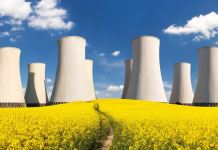


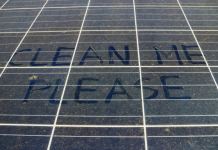

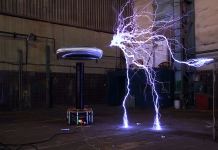


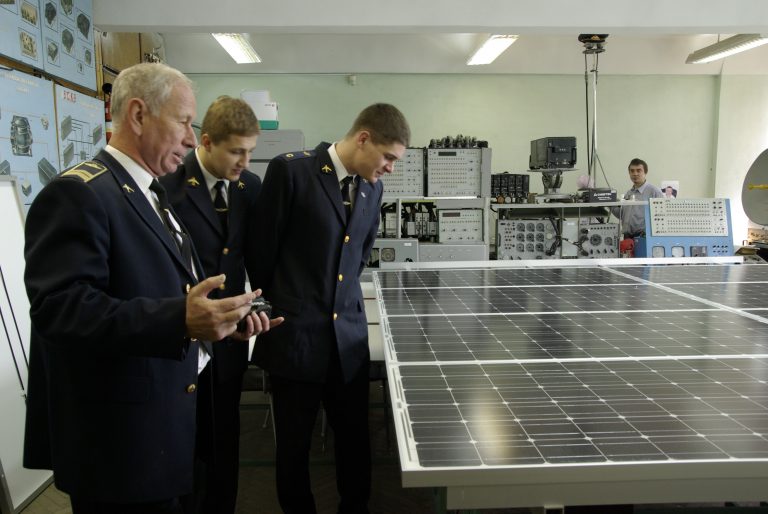
 First of all, it should be noted that a group of developers designed several wind turbines that have a vertical axis of rotation. In addition, they are equipped with a combined rotor, which allows them to function productively even when the wind speed reaches only 1 meter per second.
First of all, it should be noted that a group of developers designed several wind turbines that have a vertical axis of rotation. In addition, they are equipped with a combined rotor, which allows them to function productively even when the wind speed reaches only 1 meter per second. The innovative wind turbine can function as an independent power generation unit, as well as in a tandem with a special sun-power plant. The solar installation has a rotary platform, which significantly improves the performance of electricity generation.
The innovative wind turbine can function as an independent power generation unit, as well as in a tandem with a special sun-power plant. The solar installation has a rotary platform, which significantly improves the performance of electricity generation.
 The test ground assembly is a preliminary step in cooperation with Virgin Hyperloop One, which envisages in the future the production of special vacuum tunnel installations on an industrial scale.
The test ground assembly is a preliminary step in cooperation with Virgin Hyperloop One, which envisages in the future the production of special vacuum tunnel installations on an industrial scale. At this stage of checking the feasibility of the project, its cost is not formed. About a month – such a term was determined by the Minister of Infrastructure of our country for public assessment of the data. According to preliminary estimates, the price of the tunnel without a moving inner part will be at least three billion dollars. The Ukrainian Institute for the Future also made estimates of the cost of the Hyperloop line, which will be able to combine Kiev and Odessa. According to their data, it will cost 3.6 billion dollars.
At this stage of checking the feasibility of the project, its cost is not formed. About a month – such a term was determined by the Minister of Infrastructure of our country for public assessment of the data. According to preliminary estimates, the price of the tunnel without a moving inner part will be at least three billion dollars. The Ukrainian Institute for the Future also made estimates of the cost of the Hyperloop line, which will be able to combine Kiev and Odessa. According to their data, it will cost 3.6 billion dollars.
 Developers also provided battery storage that retains solar energy for 24 hours. The battery capacity is 25 kilowatt-hours. It should be note that the structure of a single system includes:
Developers also provided battery storage that retains solar energy for 24 hours. The battery capacity is 25 kilowatt-hours. It should be note that the structure of a single system includes: The system of autonomous power supply is especially impressive with its compact dimensions. Only 3 square meters will be needed in the room reserved for Picea. Special hydrogen cylinders need another 4-7 meters square, but they are installed on the outside of the home. For the system, 8 kilowatts of power are standard. Maximum it can provide up to 20 kilowatts. To provide an average private house with electricity and hot water, this performance is more than enough. It should be note that Picea provides only 60 percent in the heating sector, so owners should consider installing an auxiliary power source. However, in a matter there is an exception – even 60 percent of the heat will be sufficient for housing with high-energy efficiency.
The system of autonomous power supply is especially impressive with its compact dimensions. Only 3 square meters will be needed in the room reserved for Picea. Special hydrogen cylinders need another 4-7 meters square, but they are installed on the outside of the home. For the system, 8 kilowatts of power are standard. Maximum it can provide up to 20 kilowatts. To provide an average private house with electricity and hot water, this performance is more than enough. It should be note that Picea provides only 60 percent in the heating sector, so owners should consider installing an auxiliary power source. However, in a matter there is an exception – even 60 percent of the heat will be sufficient for housing with high-energy efficiency.
 According to Johannes Bauer, Lead Counselor, Head of the Projects Department of the “Economic Cooperation, Electricity, Infrastructure and Habitat” Project of the Ukrainian Delegation of the European Union: “Modernization of the Ukrainian electricity market is our main objective. The project was created to assist the regulator from Ukraine in the course of reforming so that Ukrainian colleagues could take advantage of the best developments of the European Union in this field. Since the law on the electricity market was passed with delays, and in the implementation of it in the life of delays, in the draft-twinning unfortunately, the work plan has changed. As a result, the enormous prospects that the project promised were never fully realized. But as well as before this project, we express readiness to work productively with the regulator when reforming the industries related to natural gas, electricity and central heating.
According to Johannes Bauer, Lead Counselor, Head of the Projects Department of the “Economic Cooperation, Electricity, Infrastructure and Habitat” Project of the Ukrainian Delegation of the European Union: “Modernization of the Ukrainian electricity market is our main objective. The project was created to assist the regulator from Ukraine in the course of reforming so that Ukrainian colleagues could take advantage of the best developments of the European Union in this field. Since the law on the electricity market was passed with delays, and in the implementation of it in the life of delays, in the draft-twinning unfortunately, the work plan has changed. As a result, the enormous prospects that the project promised were never fully realized. But as well as before this project, we express readiness to work productively with the regulator when reforming the industries related to natural gas, electricity and central heating. It was noted that projects that have investors from Europe help in uniting state bodies of Ukraine and bodies of the member countries of the European Union and sharing experience and advanced implementations. The considered draft twining in the field of electricity was implemented by NCRECU with the implementation of the experience of Slovak colleagues, as well as the experience of the other EU member countries that are part of the Visegrad group and lasted two years.
It was noted that projects that have investors from Europe help in uniting state bodies of Ukraine and bodies of the member countries of the European Union and sharing experience and advanced implementations. The considered draft twining in the field of electricity was implemented by NCRECU with the implementation of the experience of Slovak colleagues, as well as the experience of the other EU member countries that are part of the Visegrad group and lasted two years.
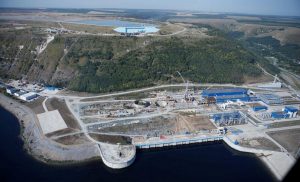 At this stage of the development of “green” energy, they are increasingly talking about the solar or wind industry, but for some reason they are silent about hydropower. However, the construction of new HPPs can significantly accelerate the step of our country on the hard road to energy independence.
At this stage of the development of “green” energy, they are increasingly talking about the solar or wind industry, but for some reason they are silent about hydropower. However, the construction of new HPPs can significantly accelerate the step of our country on the hard road to energy independence. Our country, with a sufficiently powerful resource for the development of hydropower, uses it only half. Pumped storage and hydroelectric power plants give a total of 7,350 megawatts of energy.
Our country, with a sufficiently powerful resource for the development of hydropower, uses it only half. Pumped storage and hydroelectric power plants give a total of 7,350 megawatts of energy.
 The construction of a solar power plant in the yard is not too difficult. In order to prevent unnecessary time and money, experts in the field of alternative energy recommend that they seek help from professionals in the field of installation of similar systems.
The construction of a solar power plant in the yard is not too difficult. In order to prevent unnecessary time and money, experts in the field of alternative energy recommend that they seek help from professionals in the field of installation of similar systems.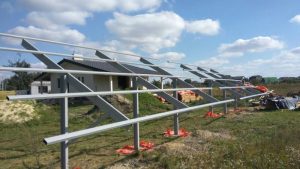 The basis for SES are special “tables”, which will then be installed on the photomodules. These designs are made of galvanized iron or aluminum. During calculations, specialists take into account the fact that “tables” must not only stand the solar panels, but also other loads in the form of snow or strong winds.
The basis for SES are special “tables”, which will then be installed on the photomodules. These designs are made of galvanized iron or aluminum. During calculations, specialists take into account the fact that “tables” must not only stand the solar panels, but also other loads in the form of snow or strong winds.
 In the role of the depositor is the Chinese national enterprise Shina Mashinere Yngineering Corratiyon (CMEC), which is going to build 50 MW of electricity generating capacity.
In the role of the depositor is the Chinese national enterprise Shina Mashinere Yngineering Corratiyon (CMEC), which is going to build 50 MW of electricity generating capacity. The head of the State Agency for Energy Efficiency and Energy Saving told the meeting participants that the basis for favorable conditions at the level of legislation was lay for mass distribution of similar “green character” projects with the participation of foreign investors. Along with this, the construction of this solar power station within the limits of energy independence will become the basis for the active activities of the remaining heads of city administrations of Ukraine.
The head of the State Agency for Energy Efficiency and Energy Saving told the meeting participants that the basis for favorable conditions at the level of legislation was lay for mass distribution of similar “green character” projects with the participation of foreign investors. Along with this, the construction of this solar power station within the limits of energy independence will become the basis for the active activities of the remaining heads of city administrations of Ukraine.
 Already in 2013, wind turbines could provide almost 4 thousand megawatts of energy to the total energy network. To clarify the picture, it should be note that Denmark’s energy consumption is only 800 megawatts more than this amount.
Already in 2013, wind turbines could provide almost 4 thousand megawatts of energy to the total energy network. To clarify the picture, it should be note that Denmark’s energy consumption is only 800 megawatts more than this amount. In addition, the estimate should include many items of related equipment and installation costs. Solar gardens allow you to invest your money in several panels in a common project and profit from them on a personal account. Some people consider this option as a kind of Deposit or alternative to pension, because payments will made for 25 years.
In addition, the estimate should include many items of related equipment and installation costs. Solar gardens allow you to invest your money in several panels in a common project and profit from them on a personal account. Some people consider this option as a kind of Deposit or alternative to pension, because payments will made for 25 years.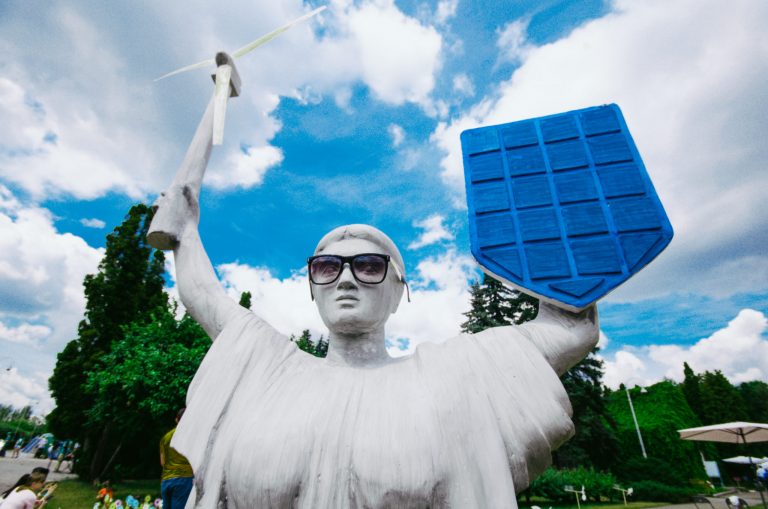
 Energy holdings in Germany in our time feel a serious competition from the energy cooperatives, since the latter produce about 30% of the electric energy due to the use of wind farms. In this regard, the energy package “Clean Energy for All Europeans” in the EU countries limits the right to connect primarily energy cooperatives to the network.
Energy holdings in Germany in our time feel a serious competition from the energy cooperatives, since the latter produce about 30% of the electric energy due to the use of wind farms. In this regard, the energy package “Clean Energy for All Europeans” in the EU countries limits the right to connect primarily energy cooperatives to the network. In this connection, the production of power generation facilities in rural collective enterprises or the combination of different agricultural producers into energy cooperatives can serve as a push for energy independence in the future.
In this connection, the production of power generation facilities in rural collective enterprises or the combination of different agricultural producers into energy cooperatives can serve as a push for energy independence in the future.


